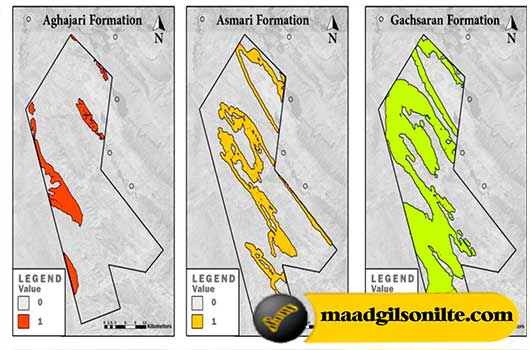
Exploration Prediction Model: Have you ever wondered how mining companies look for valuable minerals hidden deep below the earth’s surface? Mining exploration predictive models play an important role in this process by using advanced technology and data analysis to determine the location of valuable resources. In this article, we will explore the fascinating world of mining exploration and how to develop and use these predictive models.
Mining exploration is often a costly and time-consuming endeavor. Therefore, it is very important for mining companies to invest in a predictive exploration model that can help them identify the most promising areas for exploration. These models use scientific tools, databases and historical mining data to predict the presence of valuable minerals.
A mining exploration prediction model consists of several essential components. First, geological information such as rock types, structures, and potential mineral deposits are considered. In the second step, geophysical data, such as seismic surveys and magnetic field measurements, are analyzed. Finally, historical mining data and patterns are examined to understand the relationship between successful mining sites and their geological characteristics.
To develop an accurate forecasting model, mining companies use multiple data collection techniques. These include satellite imagery, aerial surveys, soil sampling and modeling software. By collecting large amounts of data, scientists can analyze patterns and correlations that lead to more accurate predictions.
The exploration of natural bitumen in Gilangreb is important because this area is located in folded Zagros. Remote sensing data (satellite images), geology, tectonics and mineral data set of the region, in preparing an innovative integrated algorithm. Gilsonite mineral is used in the early stages of exploration.
Effective criteria and sub-criteria in the exploration of this mineral are identified and evaluated according to the available exploration data. Then, these criteria are ranked by using fuzzy analytical hierarchical process, weighting, and finally by using the method of the most similar to the positive and negative ideal solution in the fuzzy environment to prepare the Gilsonite mineral potential map in West Gilan region. become Finally, the mineral prospecting map is produced using the combination of the aforementioned methods for optimal identification in the early stages of identifying this valuable mineral to reduce the time, cost and risk of exploration.
Considering that the natural bitumen mineral is a strategic material in the world and Iran, the exploration of Gilsonite deposit has a high priority, the discovery of new deposits in prone areas is the main goal of identifying and searching for minerals.
For this purpose, a set of exploratory data should be collected and finally obtained by analyzing and integrating them.
In the natural bitumen potential map (MPM), the method of this research has been implemented in three stages:
1- In the first phase, the goal is to identify and determine the effective criteria for the exploration of natural bitumen mines
2- Then, in the second phase, FAHP has been used to obtain the weights of criteria and sub-criteria
3- Finally, in the third phase, FTOPSIS was used to rank areas with more potential.
It should be noted that MCDM and MPM can be performed using FAHP, but this process can be improved if integrated with other decision-making methods.
The exploratory area of mineral bitumen, like Maad Gilsonite mine, is mainly located in Gilangarb region, which is one of Iran’s potential areas for Gilsonite discovery. This area is structurally located in the folded Zagros region, whose eastern parts are part of the Lorestan sedimentary basin and its western part is a part of the northern Dezful sedimentary basin.
Most of the hydrocarbon resources known in the West Gilan region are related to the faults of the region. In identifying and exploring the potential of Gilsonite, investigating the processes of folding, faults, fractures and their formation mechanism is of particular importance. In this area, anticlines are the main structures for the accumulation of minerals, especially gilsonite.
The next step, the most important factor in the exploration prediction model, is the faults and fractures that control the location of mineral matter in different thicknesses.
In general, the effective data in Gilsonite exploration include stratigraphy, mineralization and tectonics. Geological maps of Iran National Oil Company 1:50:000 are used to extract stratigraphic and tectonic data. Also, the release of thermal images and reflection radiometer (ASTER) have been used to determine the boundaries of formations and improve stratigraphy and tectonics.
In the following, the data used in geology, the rocks containing the reservoir and the cover rock, control the petroleum systems in Zagros. The formations are quite mature in all areas of Lorestan, and the Asmari and Gachsaran formations provide a suitable cover of petroleum materials with origin It includes the Pabdeh. This stone unit that includes the tank and the stone cover; The largest area is in West Gilan region.
Such factors have caused, in addition to other sources and reservoirs of the Zagros belt, Gilan West region to be one of the richest regions of the Middle East in terms of the characteristics of shallow reservoirs, near the surface and the emergence of hydrocarbon materials, especially the mineral gilsonite. The best host for mineralization. Gilsonite (in terms of reserves and quality) is Gachsaran Formation in Gilangrab region.
Also, the anhydritic part of the Kalhor Member, as well as the Asmari, Pabde and Gurpi formations rarely have weak mineralization. Bitumen mines in this area are generally parallel to the northwest-southeast trend. Gilsonite minerals in Pabde formation mainly have low deposits and are of high quality along transverse fractures.
Tectonic features:
Three effective tectonic features in the creation of Gilsonite mine:
1- Errors
2- Folds
3- and seams
These features have been extracted from the geological maps of Gilangarb region, 50:1,000. According to expert experts in the field of predictive models for the exploration of this mineral, longitudinal faults are more important than transverse faults. Although faults and fractures in the region are less frequent than folds, they are very important because of controlling the dispersion of mineral matter.
In the parts of the area where Pabdeh and Gurpi formations have a significant expansion, due to the malleable characteristics of these formations on the one hand and on the other hand the extensive outcrops of the Gachsaran formation in the area, the rupture on the surface has been minimized and the faults seen on the surface are few. It should be deep and short in length, and do not exceed the brick and plaster structures.
Mineralization considering that there are large and small Gilsonite mines in this exploration area. The layers created from these mines have exploratory value. Mines are classified into three layers according to their importance and influence in Gilsonite exploration, including the layer of large mines, the layer of small mines and exploration indices.
Accurate mining exploration prediction models have several advantages. First, they help mining companies minimize costs by targeting only promising areas for exploration. Second, they reduce environmental impact by avoiding unnecessary drilling. Ultimately, they significantly increase the chances of discovering valuable resources, leading to greater profits.
case study
Numerous case studies show the effectiveness of the mining exploration forecasting model. For example, geophysical surveys have helped discover massive copper deposits in Chile and gold deposits in Australia. These breakthrough discoveries highlight the importance of accurate predictive models in unlocking Earth’s hidden treasures.
Mining exploration predictive models are essential tools in the search for valuable minerals. By leveraging technology, data analysis and historical patterns, these models enable mining companies to effectively target their efforts, reduce costs and protect the environment. With continued progress, we can expect greater success in unlocking Earth’s hidden treasures and preserving our planet for generations to come.

